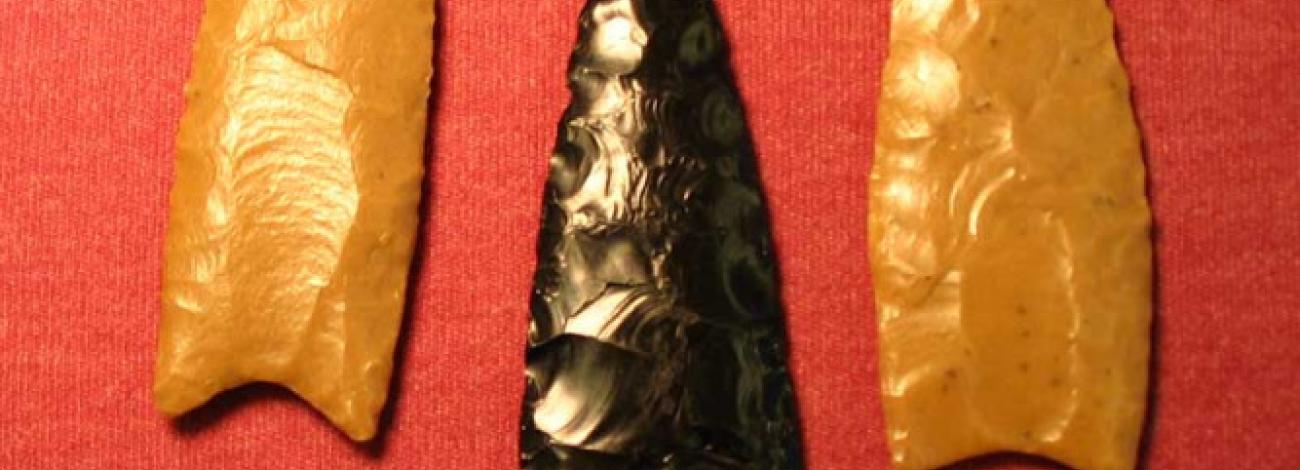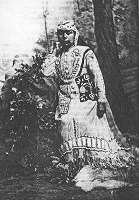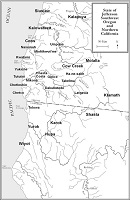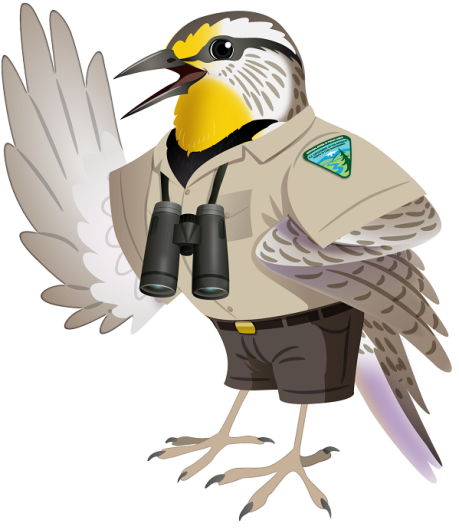
Regional Tribes

Southern Oregon
Historical Society
It is estimated that people have lived in the Rogue River Valley for at least 15,000 years. This estimate is based on archaeological evidence of distinctive dart and projectile points that date to about that time, called Clovis points (Aiken 1990:1).
The Takelma Indians (pronounced "Dagelma") lived along the middle and upper Rogue River, including the Table Rocks area. They enjoyed the rich abundance of food resources available near the Table Rocks. The Takelma were divided into two distinct sub-groups (Gray 2003:2).
These groups spoke related dialects of the Takelma Language, which is of the Penutian Language family: The Takelma proper (or Lowland or River Takelma), who called themselves Dagelma, meaning "those living alongside the river" and The Upland Takelma (or Latgawa) meaning "those living in the uplands."
In addition to the Takelma, many other Native American tribes that lived in the region. The following is a brief list of other local Indian tribes, the region they lived, and their distinct language.
- Shasta: Bear Creek Valley (south of the Talent area), Upper Applegate River, Deer Creek, Shasta River, and along the Upper Klamath River and tributaries. Hokan Speakers
- Tututni: Lower Rogue River, Athapascan speakers
- Tal-tuc-tun-te-de: Galice Creek Area, Athapascan speakers
- Da-ku-be-te-de: Applegate Area, Athapascan speakers
- Shasta Costa or Chasta Costa: Lower Illinois River and the Rogue River between present-day Agness and Foster Bar, Athapascan speakers
- Karok: Lower Klamath River, downstream from the Shasta People, Hokan speakers
- References
-
Aiken, Melvin C.
- 1990 Southwest Oregon: Living With the Land. In Living With the Land: The Indians of Southwest Oregon. Nan Hannon and Richard K. Olmo, eds. Pp. 1-5. Medford, Oregon: Southern Oregon Historical Society.
Atwood, Kay
- 1994-95 As Long as the World Goes On: The Table Rocks and the Takelma. Oregon Historical Quarterly 95(4): 516-532.
Beckham, Stephen Dow
- 1993 Takelman and Athpascan Lifeways and History, Rogue River Corridor-Applegate River to Grave Creek: Investigations for Interpretive Programs. Eugene, Oregon: DOI Bureau of Land Management, Medford District Office.
Gray, Dennis J.
- 2003 Flounce Around Fuels Cultural Resource Inventory. Medford, Oregon: U.S.D.I. Bureau of Land Management.
- 1993 Analysis of the Fish Lake Artifact Collection, Site 35JA163, Jackson County, Oregon. Medford, Oregon: U.S.D.I. Bureau of Land Management.
- 1987 The Takelma and their Athapascan Neighbors: A New Ethnographic Synthesis for the Upper Rogue River Area of Southwestern Oregon. Eugene, Oregon: University of Oregon Anthropological Papers No. 37.
Kentta, Robert
- 2004 website edits. Cultural Resource Director for Confederated Tribes of Siletz Indians.
LaLande, Jeff
- 1991 The Indians of Southwestern Oregon: an Ethnohistorical Review Anthropology Northwest: Number 6. Dept. of Anthropology - Oregon State University, Corvallis.
- 2004 So, Just How Extensive was Anthropogenic Fire in the Pacific Northwest?: Southwestern Oregon as a Case Study. Eugene, OR. Paper presented at the Northwest Anthropological Conference.
LaLande, Jeff and Reg Pullen
- 1999 Burning for a ‘Fine and Beautiful Open Country’: Native Uses of Fire in Southwestern Oregon. In: Robert Boyd (ed.), Indians, Fire, and the Land in the Pacific Northwest. Oregon State University Press, Corvallis.
Pullen, Reg
- 1996 Overview of the Environment of Native Inhabitants of Southwestern Oregon, Late prehistoric Era. Medford, Oregon: DOI Bureau of Land Management, Medford District Office.
Sapir, Edward
- 1907a Religious Ideas of the Takelma Indians of Southwestern Oregon. Journal of American Folk-Lore 20:33-49.
- 1907b Notes on the Takelma Indians of Southwestern Oregon. American Anthropologist 9(2): 51-275.
Satler, Timothy
- 1979 Preliminary Report of Test Excavations at Salt Creek Site in Southwestern Oregon. Medford, OR: DOI Bureau of Land Management, Medford District Office.
Tveskov, Mark, Nicole Norris, and Amy Sobiech
- 2002 The Windom Site: A Persistent Place in the Western Cascades of Southwest Oregon. Ashland, Oregon: SOULA Research Report 2002-1.


